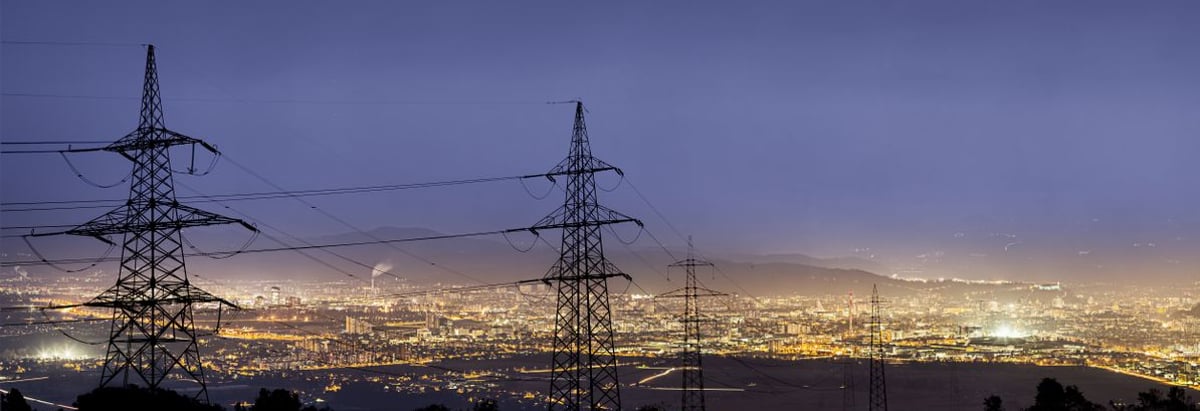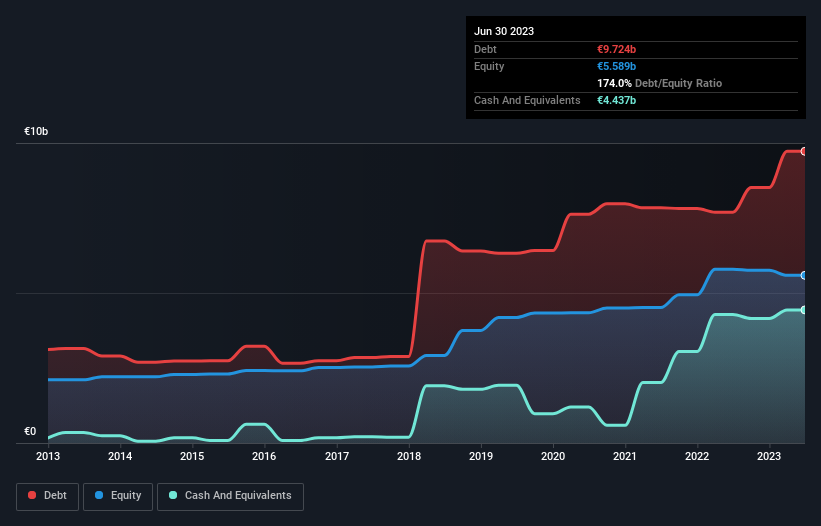- Belgium
- /
- Electric Utilities
- /
- ENXTBR:ELI
These 4 Measures Indicate That Elia Group (EBR:ELI) Is Using Debt Extensively

David Iben put it well when he said, 'Volatility is not a risk we care about. What we care about is avoiding the permanent loss of capital.' So it might be obvious that you need to consider debt, when you think about how risky any given stock is, because too much debt can sink a company. We can see that Elia Group SA/NV (EBR:ELI) does use debt in its business. But is this debt a concern to shareholders?
What Risk Does Debt Bring?
Debt assists a business until the business has trouble paying it off, either with new capital or with free cash flow. In the worst case scenario, a company can go bankrupt if it cannot pay its creditors. While that is not too common, we often do see indebted companies permanently diluting shareholders because lenders force them to raise capital at a distressed price. Of course, plenty of companies use debt to fund growth, without any negative consequences. The first step when considering a company's debt levels is to consider its cash and debt together.
See our latest analysis for Elia Group
How Much Debt Does Elia Group Carry?
As you can see below, at the end of June 2023, Elia Group had €9.72b of debt, up from €7.70b a year ago. Click the image for more detail. On the flip side, it has €4.44b in cash leading to net debt of about €5.29b.

How Strong Is Elia Group's Balance Sheet?
According to the last reported balance sheet, Elia Group had liabilities of €5.60b due within 12 months, and liabilities of €9.81b due beyond 12 months. Offsetting these obligations, it had cash of €4.44b as well as receivables valued at €942.2m due within 12 months. So its liabilities outweigh the sum of its cash and (near-term) receivables by €10.0b.
Given this deficit is actually higher than the company's market capitalization of €7.48b, we think shareholders really should watch Elia Group's debt levels, like a parent watching their child ride a bike for the first time. In the scenario where the company had to clean up its balance sheet quickly, it seems likely shareholders would suffer extensive dilution.
We use two main ratios to inform us about debt levels relative to earnings. The first is net debt divided by earnings before interest, tax, depreciation, and amortization (EBITDA), while the second is how many times its earnings before interest and tax (EBIT) covers its interest expense (or its interest cover, for short). The advantage of this approach is that we take into account both the absolute quantum of debt (with net debt to EBITDA) and the actual interest expenses associated with that debt (with its interest cover ratio).
Elia Group has net debt to EBITDA of 3.7 suggesting it uses a fair bit of leverage to boost returns. But the high interest coverage of 7.5 suggests it can easily service that debt. Pleasingly, Elia Group is growing its EBIT faster than former Australian PM Bob Hawke downs a yard glass, boasting a 803% gain in the last twelve months. The balance sheet is clearly the area to focus on when you are analysing debt. But ultimately the future profitability of the business will decide if Elia Group can strengthen its balance sheet over time. So if you're focused on the future you can check out this free report showing analyst profit forecasts.
Finally, a business needs free cash flow to pay off debt; accounting profits just don't cut it. So we clearly need to look at whether that EBIT is leading to corresponding free cash flow. Over the most recent three years, Elia Group recorded free cash flow worth 51% of its EBIT, which is around normal, given free cash flow excludes interest and tax. This cold hard cash means it can reduce its debt when it wants to.
Our View
Neither Elia Group's ability to handle its total liabilities nor its net debt to EBITDA gave us confidence in its ability to take on more debt. But the good news is it seems to be able to grow its EBIT with ease. It's also worth noting that Elia Group is in the Electric Utilities industry, which is often considered to be quite defensive. Looking at all the angles mentioned above, it does seem to us that Elia Group is a somewhat risky investment as a result of its debt. That's not necessarily a bad thing, since leverage can boost returns on equity, but it is something to be aware of. There's no doubt that we learn most about debt from the balance sheet. However, not all investment risk resides within the balance sheet - far from it. For example - Elia Group has 2 warning signs we think you should be aware of.
If you're interested in investing in businesses that can grow profits without the burden of debt, then check out this free list of growing businesses that have net cash on the balance sheet.
Valuation is complex, but we're here to simplify it.
Discover if Elia Group might be undervalued or overvalued with our detailed analysis, featuring fair value estimates, potential risks, dividends, insider trades, and its financial condition.
Access Free AnalysisHave feedback on this article? Concerned about the content? Get in touch with us directly. Alternatively, email editorial-team (at) simplywallst.com.
This article by Simply Wall St is general in nature. We provide commentary based on historical data and analyst forecasts only using an unbiased methodology and our articles are not intended to be financial advice. It does not constitute a recommendation to buy or sell any stock, and does not take account of your objectives, or your financial situation. We aim to bring you long-term focused analysis driven by fundamental data. Note that our analysis may not factor in the latest price-sensitive company announcements or qualitative material. Simply Wall St has no position in any stocks mentioned.
About ENXTBR:ELI
Elia Group
Develops and operates as a transmission system operator in Belgium and Germany.
Proven track record with moderate growth potential.
Similar Companies
Market Insights
Community Narratives





